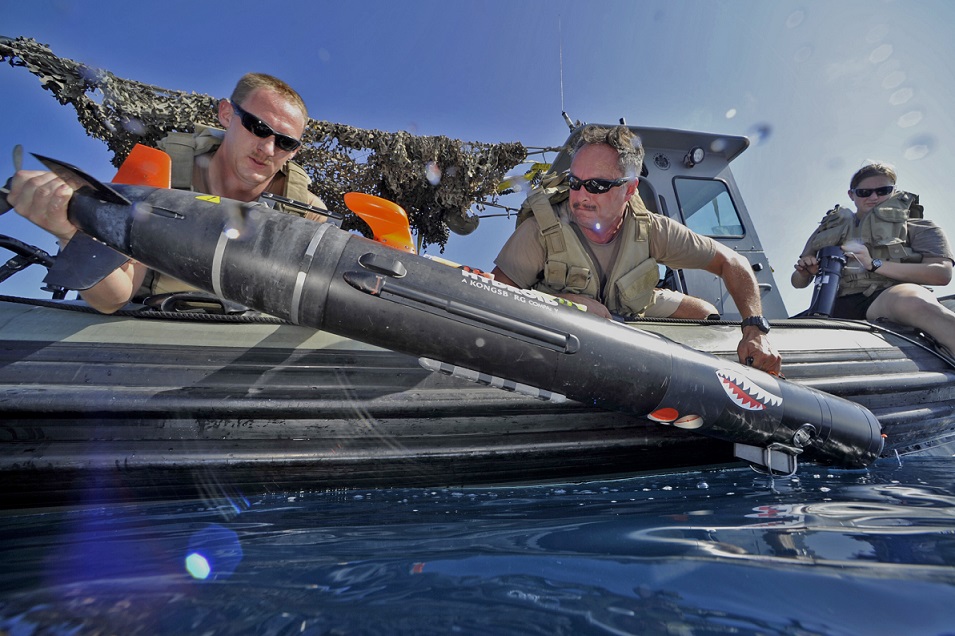
This post is also available in:
 עברית (Hebrew)
עברית (Hebrew)
The US has been investing more resources in unmanned systems and robotics. In its fiscal year 2019 budget, the Defense Department requested $9.6 billion for unmanned technology and related systems — a 28% increase from the previous year. Maritime drones are increasing in interest. Recently, the DoD has awarded a nearly $800 million contract to research and develop underwater drones. The Pentagon selected 23 companies to share the Unmanned Undersea Vehicle (UUV) Family of Systems contract.
The Mk 18 UUV was a highlight of the 2019 budget request, with the Pentagon asking for $75 million for the underwater drone mainly used for mine countermeasure operations, according to AUVSI report. This UUV can navigate via acoustic transponders in long-baseline or ultra-short-baseline mode or via P-coded GPS, according to militaryaerospace.com. Other purposes for underwater drones used by the Navy include data collection and surveillance.
The US Navy’s “Strategic Roadmap for Unmanned Systems,” published last May, stated that the “employment of manned/unmanned teams and technologies will transform modern warfare, increasing asymmetric operations, leveraging the technologies to the [Navy’s] advantage and give the warfighter the edge to win the fight.” The roadmap summary said the use of drones will “provide access to areas denied to manned platforms; provide better situational awareness; increase capabilities with greater range and persistence, and enable faster decision making” in the future.
The Navy’s first Unmanned Undersea Vehicles squadron — UUVRON 1 — will celebrate its first anniversary next month.
Work on the new project is expected to be completed by July 2023, according to stripes.com.

























